Author: Jake Huolihan
Melanoidin malt is used by many brewers as an easy replacement for the time consuming task of decoction mashing, a process believed to increase melanoidin character in beer. Weyermann produces Melanoidin malt by kilning it to about 25° Lovibond, which is said to impart rich malt flavor with notes of honey and biscuit. As a brewer of lager beer, I’ve used Melanoidin malt many times as a decoction cheat, usually making up around 5% of the grist, and it always seemed to work fine.
And then recently, I discovered a fascinating pair of articles on the Brewing Beer The Hard Way blog purporting Melanoidin malt is in the same family as another grain I’ve had quite a bit of experience with– Honey malt. Patterned after German Brumalt and produced using a proprietary process that’s kept under wraps, Gambrinus’ Honey malt is noted for imparting an intense malt sweetness with some brewers reporting toasty, nutty, and even a slight tart character. From what I could gather, the process for making Honey malt is somewhat similar to that used to make Melanoidin malt, but with some proprietary twists that give it its signature unique flavor.
Likely due to being biased by the name, I’ve always perceived beers made with Honey malt as tasting unsurprisingly honey-like and never considered it as being similar to Melanoidin malt. Curious just how similar they were, I decided to pit them against each other for science!
| PURPOSE |
To investigate the differences between Melanoidin malt and Honey malt when used in beers of otherwise similar recipes.
| METHODS |
While some may say Czech Amber doesn’t belong, I consider it to be unique in its own right and a good one for this particular xBmt. In order to showcase any differences caused by the variable, the team decided a grist of 86% Pilsner malt with 14% of either Melanoidin malt or Honey malt would be appropriate.
Czech Amber Lager
Recipe Details
| Batch Size | Boil Time | IBU | SRM | Est. OG | Est. FG | ABV |
|---|---|---|---|---|---|---|
| 5.5 gal | 60 min | 35.5 IBUs | 13.0 SRM | 1.054 | 1.014 | 5.2 % |
| Actuals | 1.054 | 1.012 | 5.5 % | |||
Fermentables
| Name | Amount | % |
|---|---|---|
| Pilsner (2 Row) Bel | 10 lbs | 84.21 |
| Melanoidin (Weyermann) | Honey Malt (Gambrinus) | 1.75 lbs | 14.74 |
| Black (Patent) Malt | 2 oz | 1.05 |
Hops
| Name | Amount | Time | Use | Form | Alpha % |
|---|---|---|---|---|---|
| Nugget | 16 g | 60 min | Boil | Pellet | 11.5 |
| Saaz | 28 g | 30 min | Boil | Pellet | 2.7 |
| Saaz | 28 g | 5 min | Boil | Pellet | 2.7 |
Yeast
| Name | Lab | Attenuation | Temperature |
|---|---|---|---|
| Pilsner Lager (WLP800) | White Labs | 75% | 50°F - 55°F |
Notes
| Water Profile: Ca 30 | Mg 0 | Na 8 | SO4 1 | Cl 55 |
Download
| Download this recipe's BeerXML file |
I prepared a large yeast starter with two packs of WLP800 Pilsner Lager yeast a few days ahead of time.
The day before brewing, I collected my water and gathered my grains, noticing only a slight difference in appearance between the Melanoidin and Honey malts.
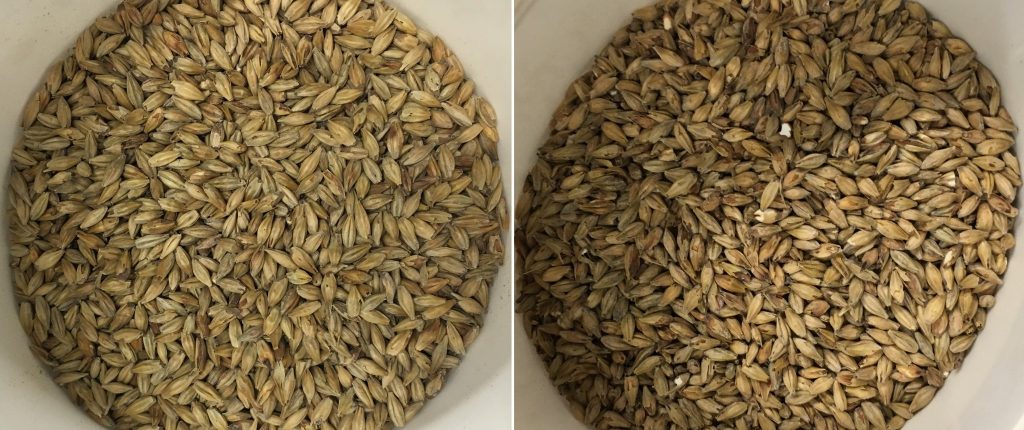
After rolling out of bed the next morning, I began heating the strike water for the Melanoidin batch then waited 15 minutes before starting the Honey batch.
Both batches mashed in and hit exactly the same temperature.

Following 60 minute rests, I batch sparged to collect equal pre-boil volumes from each mash.

Both batches were boiled for 60 minutes with hops added per the recipe.
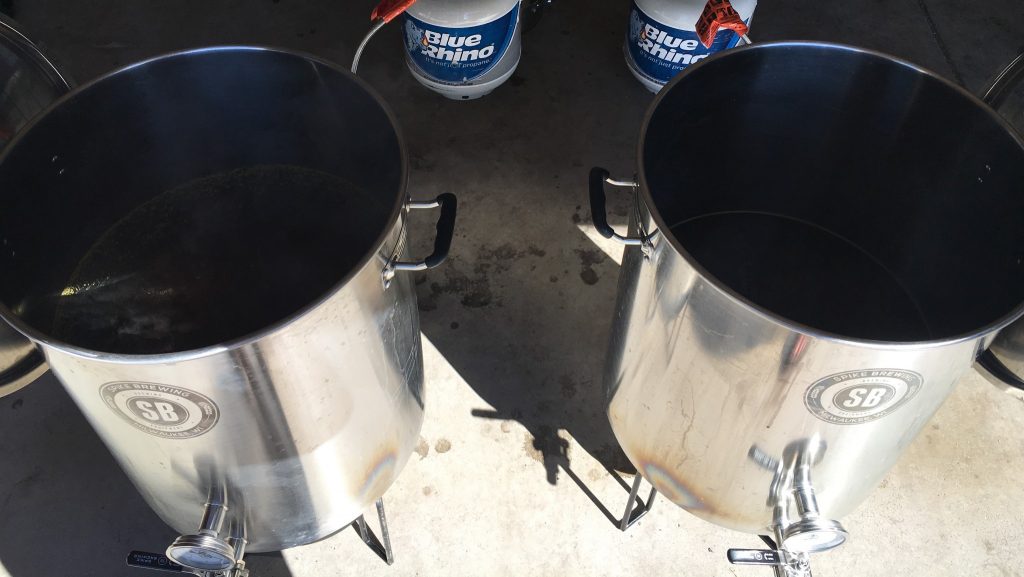
At the completion of each boil, I very quickly chilled the wort to 72°F/22°C, which was slightly warmer than my groundwater temperature.
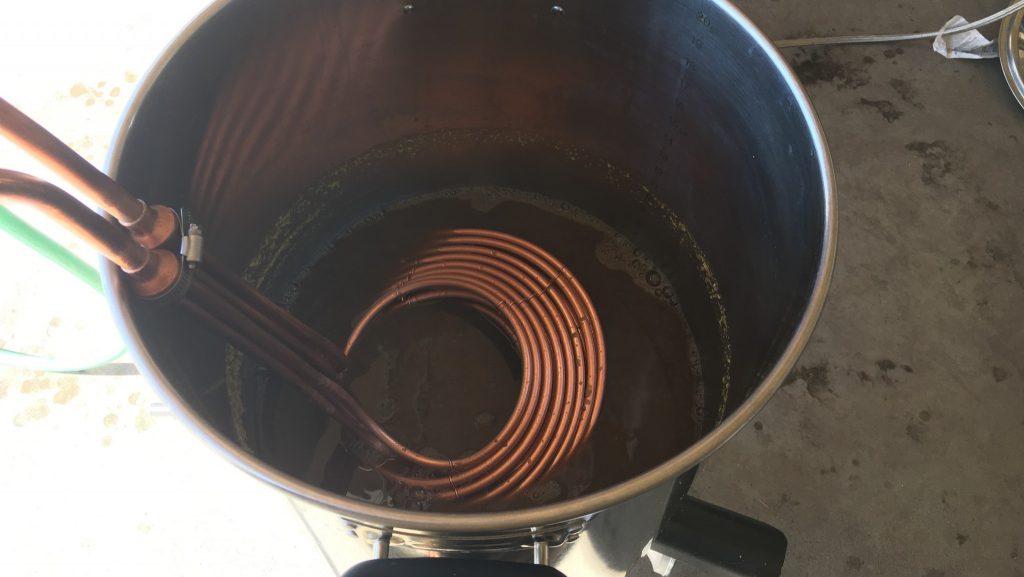
Hydrometer measurements at this point revealed each batch was at the same OG and shared a very similar appearance, flavor, and aroma.
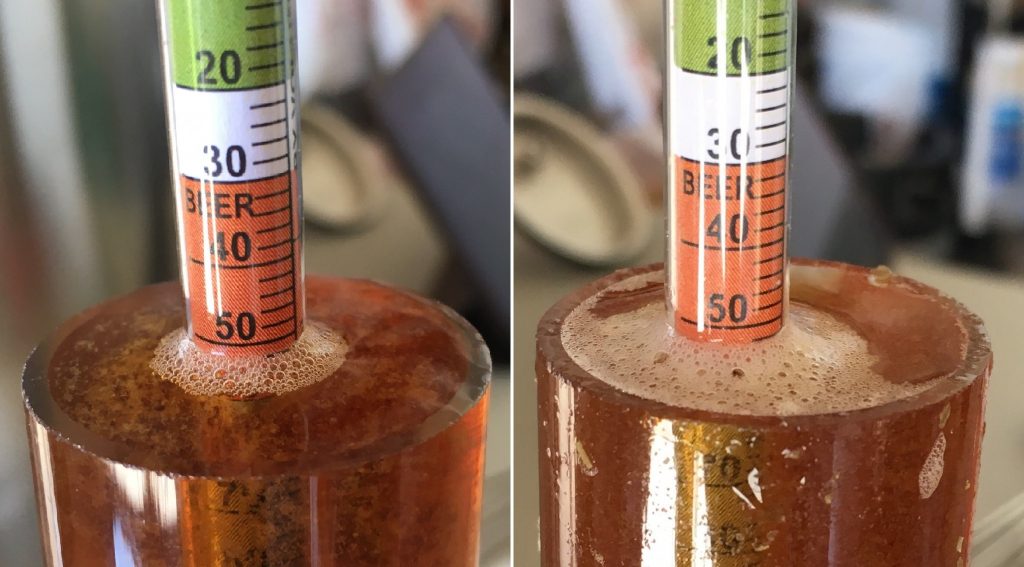
I filled a couple marked fermentors with the same amount of work and placed them in my cool chamber where they were left overnight to finish chilling to my desired fermentation temperature of 50°F/10°C. The following morning, I decanted the large yeast starter, swirled to ensure homogeneity, then evenly split it into two sanitized mason jars from which they were pitched. Both beers were then hit with 60 seconds of pure oxygen.
Both beers were fermenting actively 36 hours later.
The beers were still chugging along after 4 days, which is when I began to gently raise the temperature to speed things up, ultimately reaching 62°F/17°C. With fermentation activity absent 15 days post-pitch, I took a hydrometer measurement showing FG had been reached, and revealing an ever so slight difference between the batches.
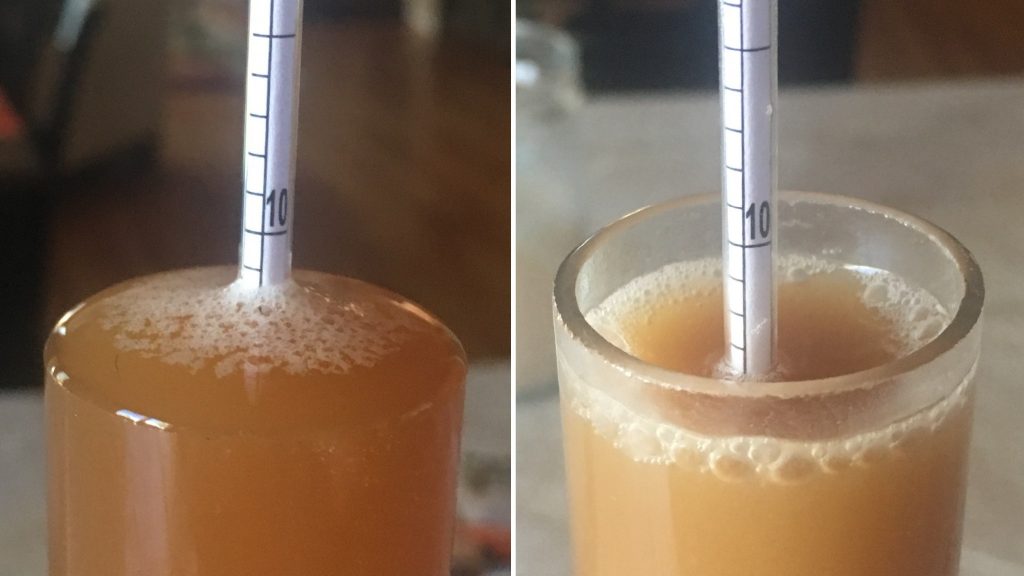
I let the beers sit another week before taking a second hydrometer measurement that confirmed the first, after which I proceeded to cold crash, fine with gelatin, and rack to kegs.

Following a brief period of burst carbonation, I reduced the CO2 to serving pressure and let the beers condition in my keezer for about a week before they were ready to serve to unsuspecting tasters. To my eyes, they looked exactly the same.

| RESULTS |
A panel of 19 people of varying levels of experience participated in this xBmt during a montly Aurora City Brew Club meeting. Each taster, blind to the variable being investigated, was served 2 samples of the beer made with Melanoidin malt and 1 sample of the beer made with Honey malt in different colored opaque cups then asked to select the unique sample. With the given sample size, a total of 11 correct selections (p<0.05) would have been required to achieve statistical significance. In the end, exactly 11 people (p=0.024) chose the different beer, suggesting participants in this xBmt were able to reliably distinguish a beer made with Melanoidin malt from the same beer made with Honey malt.
Those who were correct on the initial triangle test were then asked to compare only the two different samples, still blind to the variable in question, and select the one they preferred. Four tasters reported preferring the beer with Melanoidin malt and 3 felt the Honey malt beer was better; however, another 3 tasters said they had no preference despite perceiving a difference while 1 person reported tasting no difference between the beers.
My Impressions: Over multiple attempts, I was consistently able to tell these beers apart in blind triangle tests. To me, the sample made with Melanoidin malt was smoother, crisper, and had what I consider to be more lager-like character; it was also slightly more grainy and toasty compared to the Honey malt beer, which I perceived as being sweeter, fuller bodied, and somewhat fruity. If I had to choose, I’d say I preferred the beer made with Melanoidin malt over the one made with Honey malt, but I wasn’t really a fan of either. For the sake of the xBmt, I used more of each malt than I ever would for a “real life” batch, and while they were drinkable, neither were terribly pleasant.
| DISCUSSION |
Despite being produced using somewhat similar methods, the results of this xBmt suggest Melanoidin malt is different than Honey malt, at least based off the fact a significant portion of participants were able to reliably distinguish them from each other. While they certainly shared some characteristics, these findings counter the proposition that the malts can be used interchangeably to produce the same results, and provide continuing evidence that ingredient selection matters.
It’s possible the quantity of Melanoidin malt and Honey malt included in the recipes for this xBmt is responsible for the significant results, that smaller amounts would have produced a smaller delta, though I’m personally inclined to accept the malts are simply different. This is a good thing, as it affords brewers more options, and it’s good to have options.
If you have any thoughts about this xBmt, please do not hesitate to share in the comments section below!
New Brülosophy Merch Available Now!
Follow Brülosophy on:
FACEBOOK | TWITTER | INSTAGRAM
If you enjoy this stuff and feel compelled to support Brulosophy.com, please check out the Support page for details on how you can very easily do so. Thanks!

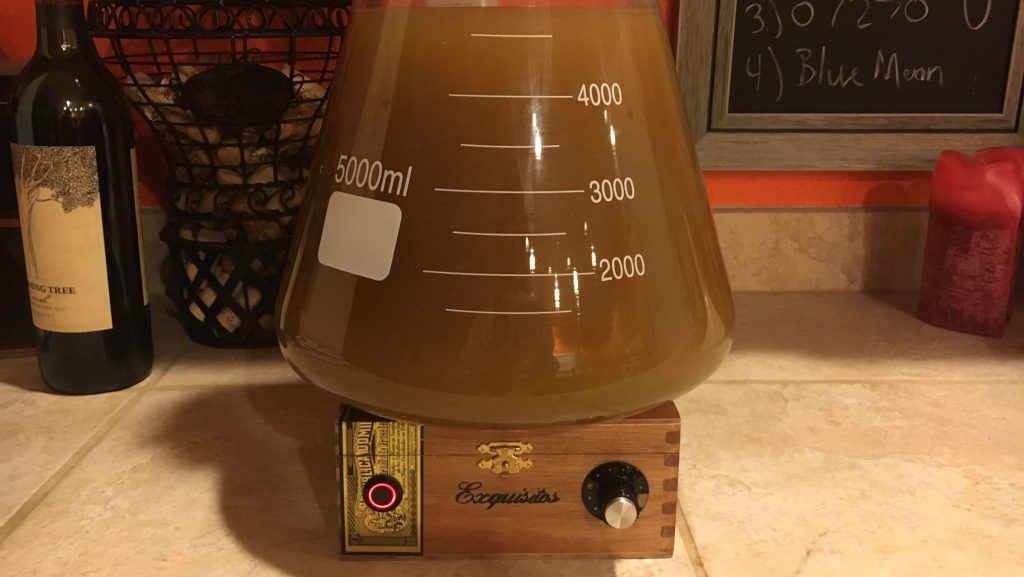

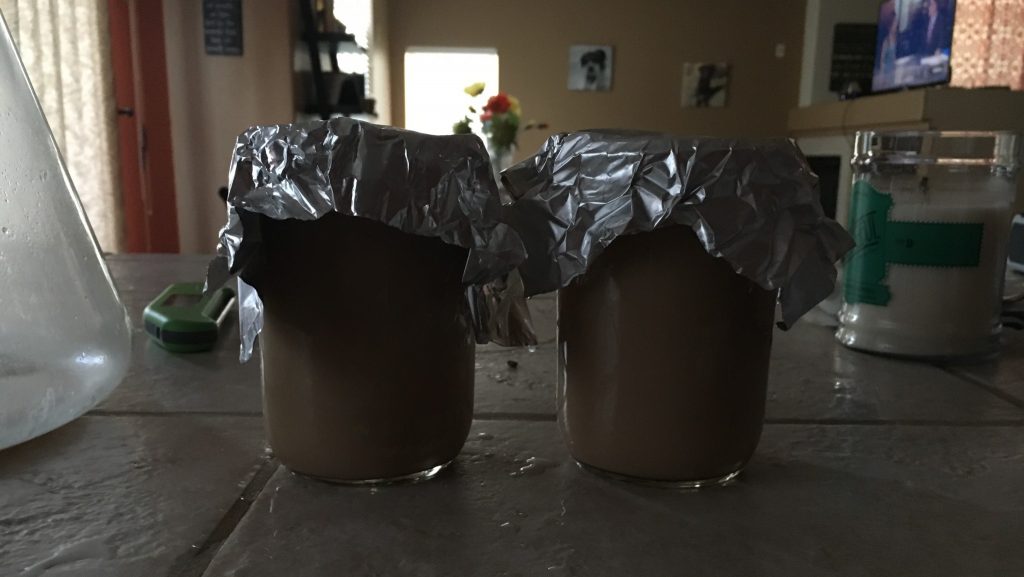
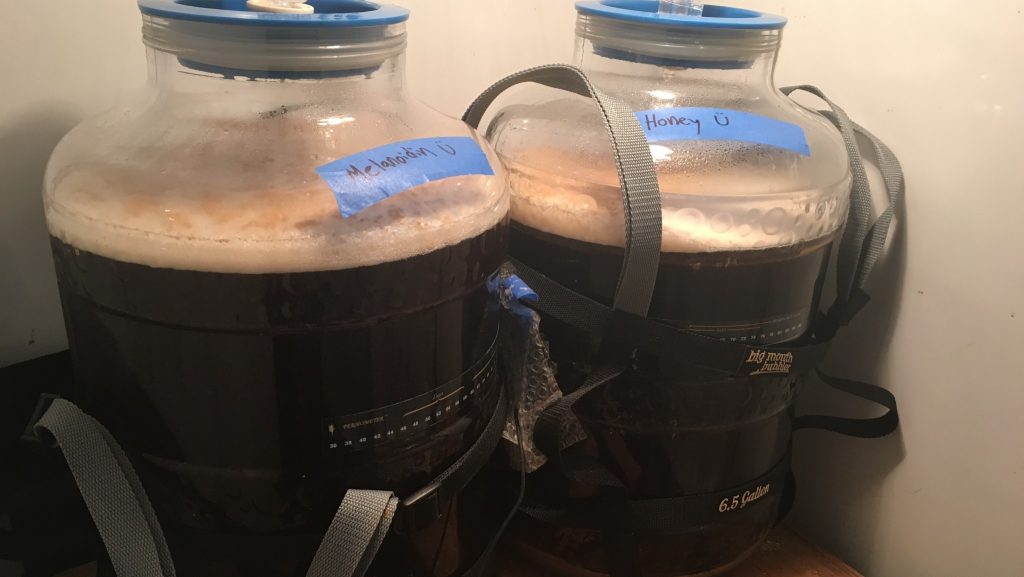










20 thoughts on “exBEERiment | Grain Comparison: Melanoidin Malt vs. Honey Malt In A Czech Amber Lager”
14.74% honey malt? You’re brave.
In the name of science!
I used just under 5% and I thought that was too much. 2% for me. I personally prefer Melanoidin malt.
I appreciate you adding the water profile to the recipes.
I really like this comparison except, as pointed out, that quantity is way too high. I hope to see more grain comparisons similar to this.
I’ve gone as high as 10% melanoidin malt and it was great. Definitely a strong and distinctive flavour. It fades over time, so I wouldn’t write the beers off too soon.
The beers have been lagering for about 4 weeks at this point. Definitely not terrible, I don’t really find this % of either malt terribly pleasant though. It was a great learning experience with these malts though.
Thanks for the mention, and for pointing the glaring omission I had meant to correct. In my first post I was under the impression that these malts were practically the same given the small amount of information I could find. But when comparing the two Honey malt is very unique and I was going to include the differences between these malts in part two. In fact I had a video for the Part 2 post in which I compared malts that undergo a proteolytic stewing phase before kilning but it just got too long and boring so I scrapped it. In an attempt to understand Honey malt I had compared Honey, Melanoidin, my brumalt and a Munich 30L by making a tea with each one. What I noticed is that Melanoidin was toasty and slightly sour with a pH of 5 whereas the Honey was sweeter, sour (pH 4.91) and funky. The brumalt I made was sweet and more sour than melanoidin (pH 4.91 also) but more roasty than Honey. Just to compare Munich 30 is sweet, malty but does not have the same sourness (pH 5.26) or roasty flavour. Compared to all of these Honey has an extra depth of flavour, slightly vinous and funky, there’s a step in the process I haven’t been able to figure out how to re-create. It’s definitely not interchangeable Thanks for doing this comparison, next time I’ll be sure to be more thorough in my descriptions. Cheers!
It’s actually interesting you note sour. It’s one descriptor i think wants to get omitted just because of the obvious implications for ones beer. I can see interpreting both of these extreme examples as being slightly tart. Since I didn’t measure ph on these I obviously can’t speak to that but it definitely has a sort of twang to it. Super interesting to me
I just brewed an American wheat using honey malt for the first time. I couldn’t put my finger on an “off” taste until I read this. Vinous, sour and funky describes it perfectly. Not a fan at least in this style.
Pedro the Lion! Nice experiment. Seems these malts are best suited for use in small quantities.
This is a case where sulfate could have improved the resulting beer. Many brewer’s mistaken assumption that sulfate makes beer bitter or makes degrades hop flavor, is quite false. In the case of this cloying beer, sulfate would help dry the beer finish and possibly improve the drinkability. Chloride actually makes the sweetness perception worse.
Fortunately, these beers can be slightly salvaged with a dose of gypsum in the keg (or glass) to bring the sulfate content into the 100 to 200 ppm range. I recommend testing in the glass to find an appropriate dose before committing to dosing the kegs.
I notice you’re using the Sterile Siphon Starter with a Big Mouth Bubbler. Is there any modifications you had to make to it to get it to fit or does it fit right on the BMB lid? I’d like to get the siphon for my BMB but the hole in the lid seems too small.
So it doesn’t fit tight but if you press your hand around the opening with it and blow into the sterile filter the siphon will start. Works quite well IMO.
Thanks. Once the siphon starts, is it suctioned on there so that you don’t need to hold it the entire time?
Yup same principle as an auto siphon just need to get it going
Im a big fan of melanoidin malt. Ive consistently used it in beers ranging from IPAs to saisons to enhance the malt backbone without adding that crystal malt sweetness, usually around 5-8% of the grist. I like to think of it as cross between munich malt and carapils. Its interesting that you compared with honey malt because Ive always heard that melanoidin being interchangable with aromatic malt, but Ive always been so happy with my results that Ive never
I was going to use some honey malt in my trial session IPA, but I don’t think I will after reading this! It was a large amount though, so maybe I am being superficial. What malts would give me sweetness in the finish to balance the massive dryhop I plan to use?
Pedro 🙁
I like your mash tun setup. What makes up the dead space screen or filter inside those rectangle coolers?